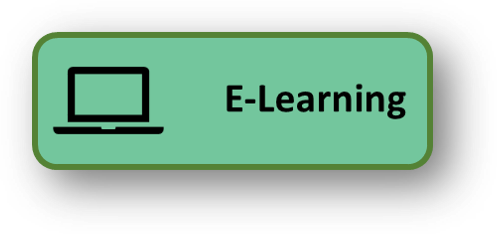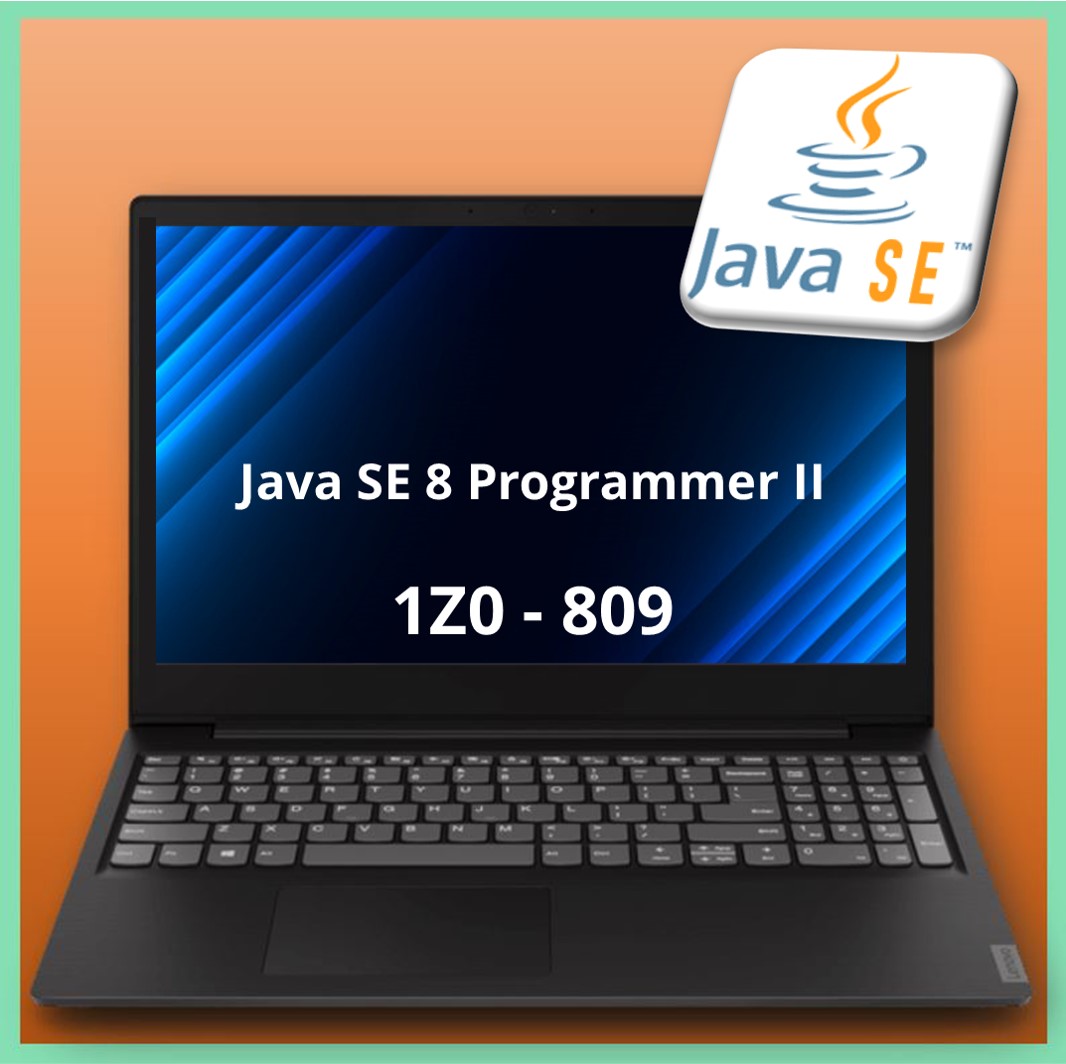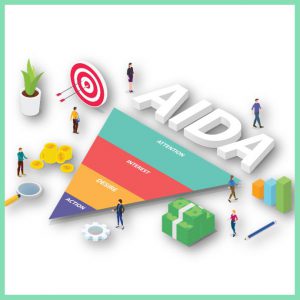Aangeboden leervormen

Java SE 8 Programmer II (1Z0-809)
Met de online training Java SE 8 Programmer II (1Z0-809) van Sinteno krijg je de meest complete digitale leeromgeving en de beste voorbereiding op de praktijk. Het is een dynamische en unieke voorbereiding op de certificering EN geeft je tools die volledig zijn geïntegreerd in een omgeving.
De online training Java SE 8 Programmer II (1Z0-809) geeft toegang tot zowel de e-Learning, de examensimulatie, een online mentor, examenquizzen, tips, trucs en links.
Deze online training geeft echter géén toegang tot een Live Lab.
Hier vind je meer informatie over CertKits en Live Lab's
In de online training Java SE 8 Programmer II (1Z0-809) van Sinteno leer je onder andere de basisprincipes van Java classes, inheritance, interfaces, exceptions, data en tijdnotaties, JDBC API en File I/o.
Onderwerpen die aan bod komen zijn de mogelijkheden van Java, het maken van simpele classes, het maken van sub-classes, testen van classes, abstracte java-classes, maken van interfaces, DAO, collections, exception handling, het gebruik van Java I/O, path en file classes, de java.util.concurrent library gebruiken, JDBC en nog veel meer.
Voor wie
Softwareontwikkelaar.
Programma
Inhoud
Tijdens de online training Java SE 8 Programmer II (1Z0-809) worden de volgende onderwerpen behandeld:
Encapsulation, Polymorphism, and Abstraction
- Start the course
- Recall:
- The features of Java technology and describe Java Community Process or JCP
- The structure of a simple Java class with a main method, Java naming conventions, and how to compile and run a program
- Primitive variables and operators in Java
- Use of if-else and switch statements, iteration with loops, and creating arrays in Java
- String and StringBuilder classes for working with strings in Java
- Java fields, constructors, and methods
- Describe how:
- To use encapsulation in Java class design
- To create and use Java subclasses
- Methods and constructors can be overloaded in Java
- Use access levels, such as private, protected, default, and public, in Java classes
- Describe how to override methods in Java and use virtual method invocation
- Describe how to apply polymorphism in Java
- Override and overload methods and apply polymorphism in Java
- Implementing casting in Java
- Describe how to:
- Work with static classes in Java
- Implement the singleton design pattern
- Create an immutable class in Java
- Design general purpose base classes by using abstract classes in Java
- Apply the Abstract keyword to a Java class
- Describe how the final keyword can be used in Java
- Describe how to create and use nested classes in Java
- Implement an inner class as a helper class in Java
- Describe how to create and use enumerations in Java
- Learn how to use encapsulation, polymorphism, and abstraction in Java 8 programming
Interfaces, Lambda Expressions, Collections, and Generics
- Start the course
- Describe how to work with interfaces in Java
- Use default and static methods in Java interfaces
- Describe how to extend an interface in Java
- Use Java interfaces in a Java application
- Describe how:
- To use anonymous inner classes in Java
- Classes, interfaces, anonymous inner classes, and lambda expressions can be used to provide similar code functionality in Java
- To use lambda expressions in Java
- Write lambda expressions for a Java application
- Describe how to create a custom generic class using the type inference diamond
- Describe the Java Collections Framework
- Contrast the implementation of an ArrayList in Java without and with generics
- Describe how to implement:
- A TreeSet using the Set interface in the Java Collection application programming interface or API
- A TreeMap using the Map interface in the Java Collection application programming interface or API
- An ArrayDeque using the Deque interface in the Java Collection application program interface or API
- Describe how to:
- Use the Comparable and Comparator interfaces to sort Java collections
- Use the builder pattern to create a Java class
- Iterate through a collection using a Lambda expression
- Learn the features of Java interfaces, the inner anonymous class, and Java streams
- Describe the Stream Application Program Interface or API and how it can be used to process Java collection elements in parallel
- Describe how to call an existing method using a method reference and how methods can be chained in Java Lambda expressions
Inheritance, Interfaces, Exceptions, and Deployment
- Start the course
- Describe how to implement the core interfaces – Predicate, Consumer, Function, and Supplier – in the java.util.function package
- Describe how to use the:
- Primitive versions of built-in functional interfaces in Java
- Binary versions of built-in functional interfaces in Java
- UnaryOperator functional interface in Java
- Practice creating a consumer, function supplier, and bipredicate lambda expression in Java
- Describe the:
- Types of stream operations in Java and overview map and peek
- Map, flatMap, and peek methods in the Stream application programming interface or API, extract data from an object using map, and return data elements to a stream using peek
- Java.util.stream search methods, and their use of optional classes and lazy processing
- Compare forEach loop to a findFirst short-circuit terminal operation in a Java program
- Describe the methods available for manipulating data in the Java Stream application programming interface or API
- Use Java stream methods to count the number of transactions and determine the min and max values in a collection for transactions
- Describe how to sort stream data using the collect method and Collectors class in Java
- Describe how to save, group, and partition data using the Collectors class in Java
- Collect, combine, and group stream data results in Java
- Use Java Stream methods to calculate totals and averages in a collection
- Describe how to handle exceptions with try catch and finally clauses in Java
- Catch checked and unchecked exceptions in a Java program
- Describe how to:
- Use try-with-resources statements in Java
- Throw an exception in Java
- Catch custom exceptions in Java
- Extend and throw exceptions in Java programs
- Use assertions in Java programs
Date/Time API, I/O and File I/O (NIO.2), and Concurrency
- Start the course
- Describe the java.time application program interface or API
- Use the:
- LocalDate class to display a date in Java
- LocalTime class to display a time in Java
- LocalDateTime class to display a date and time in Java
- Describe how to work with dates and times across time zones in Java
- Work with dates and times across different time zones in a Java application
- Describe how to use classes, interfaces, and methods associated with date and time in Java
- Format dates in Java
- Practice working with local dates and times in Java
- Describe the basics of input and output in Java
- Describe how:
- To work with input and output streams in byte format in Java
- To work with input and output streams in character format in Java
- Input and output streams are chained in Java
- To read and write data from the console
- To write and read objects using serialization
- Serialize and deserialize a ShoppingCart object using Java
- Practice writing a simple Java console I/O application
- Describe how to use the:
- Path interface to operate on file and directory paths
- Files class to check, delete, copy, or move a file or directory
- Stream application program interface or API with NIO.2
- Read text files using new features in Java 8 and the lines method
- Practice listing directories and files using new features found in Java 8
Concurrency, Parallelism, the JDBC API, and Localization
- Start the course
- Describe operating system task scheduling in Java
- Describe how to use an ExecutorService to concurrently execute tasks
- Identify potential threading problems
- Describe how to use synchronized code blocks to manage atomicity
- Describe how to use the java.util.concurrent collections to manage threads
- Create a network client using the java.util.concurrent package
- Learn how to implement inheritance, interfaces, handle exceptions, and deploy a Java application
- Describe the need for parallelism in modern systems
- Describe the Fork-Join framework in Java
- Implement the Java Fork-Join framework
- Review the key characteristics of streams in Java
- Describe how to make a stream pipeline execute in parallel in Java
- List the key assumptions needed to use a parallel pipeline
- Define reduction in relation to streams in Java
- Describe the process for decomposing and then merging work in a Java stream
- List the key performance considerations for parallel streams in Java
- Perform calculations without a stream pipeline and with a pipeline
- Learn how to implement inheritance, interfaces, handle exceptions, and deploy a Java application
- Define the Java database connectivity application program interface or JDBC API and describe how to use it to connect to a database, submit queries, and retrieve results
- Describe how to perform the Create Retrieve Update Delete or CRUD operations using the Java database connectivity application program interface or JDBC API
- Manage operation performed using the Java database connectivity application program interface or JDBC API
- Work with the Derby database and Java database connectivity or JDBC
- Describe:
- The benefits of a properties file and how to load and use properties files for Java applications
- Resource bundles
- How to apply local formats to date and currency values in Java
- Learn how to implement inheritance, interfaces, handle exceptions, and deploy a Java application
TestPrep 1Z0-809 Java SE 8 Programmer II
- TestPrep 1Z0-809 Java SE 8 Programmer II
Resultaat
Na het volgen van de online training Java SE 8 Programmer II (1Z0-809) begrijp je alle basisprincipes van Java classes, exception handling en File I/o.
Voorkennis
Je hebt Java SE 8 Fundamentals (exam 1Z0-808) afgerond of je hebt vergelijkbare kennis.
Examen
De online training 1Z0-809: Java SE 8 Programmer II bereid je voor op het examen Java SE 8 Programmer II (1Z0-809)
Bij de training inbegrepen
| Certificaat van deelname | ja |
| Voortgangsbewaking | ja |
| Geschikt voor mobiel | ja |
| Studieadvies | Onze consultants zijn beschikbaar om je te voorzien van studieadvies. |
| Studiemateriaal | Gecertificeerde docenten met uitgebreide kennis over de onderwerpen. |
| Service | Service via telefoon of e-mail. |


 Opbouw verkoopgesprekken (online)
Opbouw verkoopgesprekken (online) 




